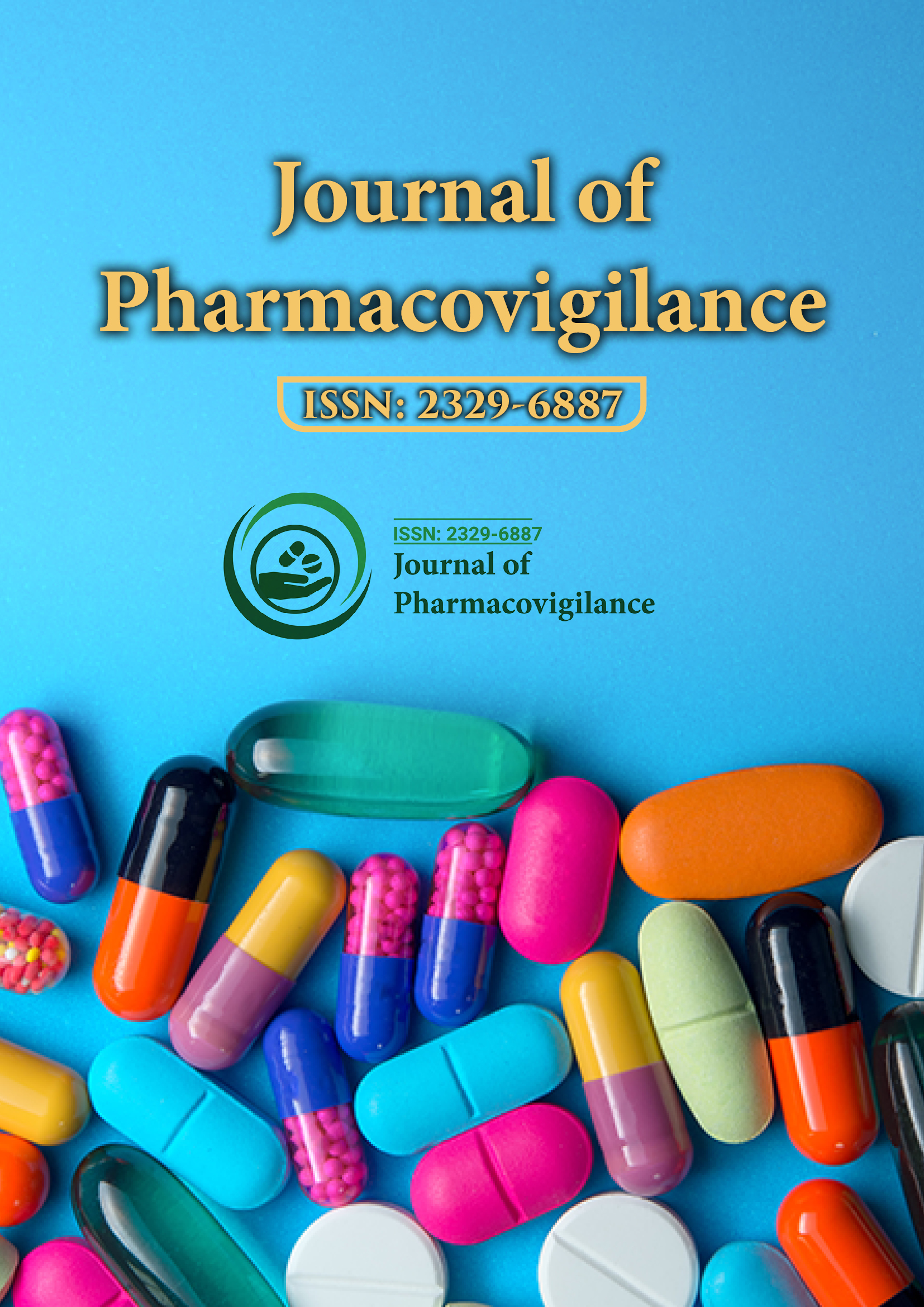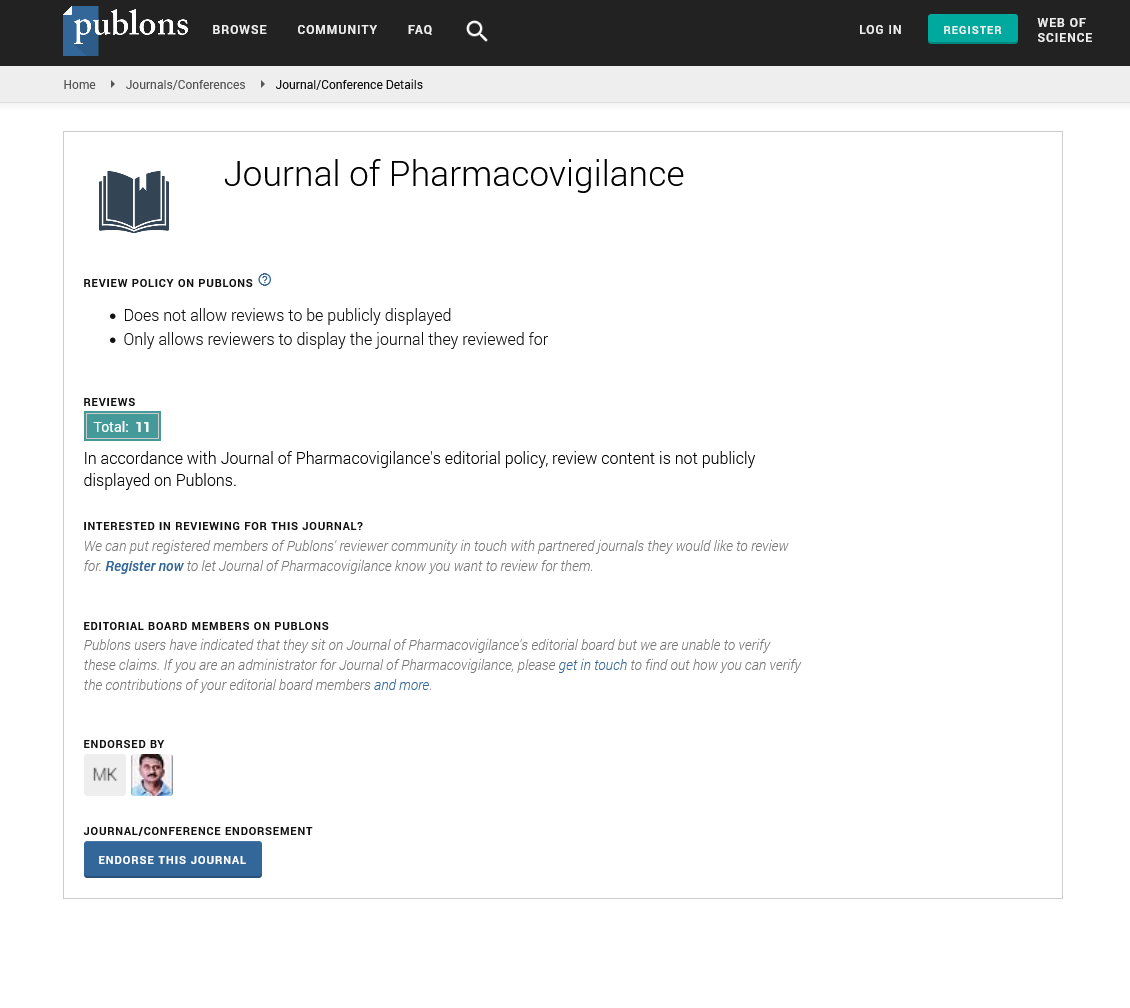Indexed In
- Open J Gate
- JournalTOCs
- The Global Impact Factor (GIF)
- RefSeek
- Hamdard University
- EBSCO A-Z
- OCLC- WorldCat
- Publons
- Euro Pub
- Google Scholar
Useful Links
Share This Page
Journal Flyer

Open Access Journals
- Agri and Aquaculture
- Biochemistry
- Bioinformatics & Systems Biology
- Business & Management
- Chemistry
- Clinical Sciences
- Engineering
- Food & Nutrition
- General Science
- Genetics & Molecular Biology
- Immunology & Microbiology
- Medical Sciences
- Neuroscience & Psychology
- Nursing & Health Care
- Pharmaceutical Sciences
Commentary Article - (2024) Volume 12, Issue 4
Antimicrobial Pharmacovigilance: Resistance, Safety and Clinical Practice
Sherlock Pissano*Received: 20-Nov-2024, Manuscript No. JP-24-28262; Editor assigned: 22-Nov-2024, Pre QC No. JP-24-28262(PQ); Reviewed: 10-Dec-2024, QC No. JP-24-28262; Revised: 17-Dec-2024, Manuscript No. JP-24-28262(R); Published: 24-Dec-2024, DOI: 10.35248/2329-6887.24.12.498
About the Study
Pharmacovigilance, the science and activities relating to the detection, assessment, understanding and prevention of adverse effects or any other drug-related problem, plays a crucial role in ensuring the safe and effective use of antimicrobial agents. Given the increasing threat of Antimicrobial Resistance (AMR) and the potential for serious Adverse Drug Reactions (ADRs), robust pharmacovigilance systems are essential for monitoring antimicrobial use, detecting emerging resistance patterns and identifying and mitigating ADRs. Antimicrobial resistance, the ability of microorganisms (such as bacteria, fungi, viruses and parasites) to withstand the effects of medications designed to kill them, poses a significant global health challenge. The indiscriminate and often inappropriate use of antimicrobials in both human and veterinary medicine has contributed to the rise of AMR. Resistant microorganisms can cause infections that are difficult or impossible to treat, leading to prolonged illnesses, increased mortality and higher healthcare costs. Pharmacovigilance plays a critical role in detecting and monitoring the emergence and spread of AMR. By actively collecting and analyzing data on antimicrobial use patterns, treatment outcomes and the emergence of resistant strains, pharmacovigilance systems can provide valuable insights into the evolving AMR landscape. This data can be used to inform public health interventions, such as antimicrobial stewardship programs, which aim to optimize antimicrobial use and minimize the development and spread of resistance. One of the key strategies for detecting AMR within the pharmacovigilance framework is the implementation of antimicrobial resistance surveillance programs. These programs involve the systematic collection and analysis of data on the prevalence and patterns of antimicrobial resistance in various settings, including hospitals, clinics and the community. Surveillance data can be used to track the emergence and spread of resistant strains, identify local and regional AMR trends and inform targeted public health interventions.
Routine laboratory data from microbiology laboratories on the isolation and identification of microorganisms, as well as antimicrobial susceptibility testing results, can provide valuable information on the prevalence and patterns of AMR.
Hospital infection surveillance data on incidence and characteristics of healthcare-associated infections can be used to identify outbreaks of infections caused by resistant microorganisms.
Electronic health records can be mined to identify patients who have received antimicrobials, their treatment outcomes and the emergence of potential ADRs.
Pharmaceutical sales data on antimicrobial sales can provide insights into antimicrobial use patterns and can be used to identify potential areas of concern.
In addition to detecting AMR, pharmacovigilance plays a crucial role in identifying and mitigating ADRs associated with antimicrobial use. ADRs can range from mild and transient side effects to severe and life-threatening complications. Common ADRs associated with antimicrobials include allergic reactions, gastrointestinal disturbances and hepatotoxicity. Pharmacovigilance systems utilize various methods to detect ADRs.
• Spontaneous reporting systems rely on healthcare professionals to voluntarily report suspected ADRs to regulatory authorities or pharmaceutical companies.
• Active surveillance programs involve the proactive collection of data on ADRs from specific populations or healthcare settings.
• Case-control studies compare the exposure to a specific antimicrobial among patients who experienced an ADR with those who did not.
• Cohort studies follow a group of patients who have been exposed to a specific antimicrobial over time to assess the incidence of ADRs.
Conclusion
Once an ADR is suspected, a thorough investigation is conducted to determine the causal relationship between the antimicrobial and the adverse event. This may involve reviewing the patient's medical history, conducting laboratory tests and consulting with medical experts. If a causal relationship is established, appropriate measures are taken to mitigate the risk of future occurrences, such as issuing warnings or contraindications in the drug label, providing educational materials to healthcare professionals, or withdrawing the drug from the market in severe cases. Developing and disseminating educational materials provide accurate and up-to-date information on the appropriate use of antimicrobials to healthcare professionals, patients and the public. Implementing antimicrobial stewardship programs aim to optimize antimicrobial use by promoting the judicious selection, dosing and duration of antimicrobial therapy. Developing clinical guidelines provide evidence-based recommendations for the diagnosis, treatment and prevention of infections. Tracking antimicrobial prescribing trends and identifying areas of concern.
Citation: Pissano S (2024). Antimicrobial Pharmacovigilance: Resistance, Safety and Clinical Practice. J Pharmacovigil. 12:498
Copyright: © 2024 Pissano S. This is an open-access article distributed under the terms of the Creative Commons Attribution License, which permits unrestricted use, distribution reproduction in any medium, provided the original author and source are credited.

